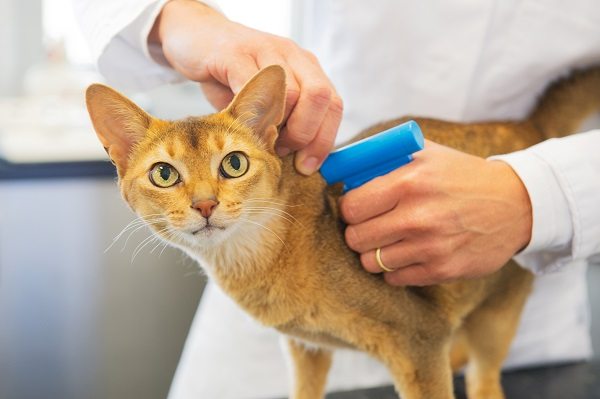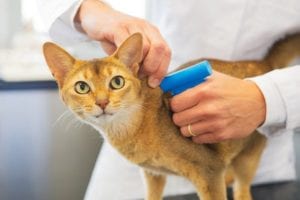Recent studies have shown that up to a third of Australian cats and dogs are now considered overweight. Dogs are more likely than cats to have weight problems, and pets that are older, neutered or live in single-pet households are also more at risk. Unfortunately, certain breeds are more prone to obesity but this doesn’t mean it can’t be avoided.
Here’s some information on diagnosing and treating obesity in your pets.
Is My Pet Overweight?
To check if your pet is overweight, start by feeling around their ribcage and spine. In a healthy animal, you should be able to feel their bone structure through only a thin layer of fat. If you can’t find the ribcage at all then you definitely have an overweight pet.
If you know the optimal weight for your pet’s age and breed, then you can weigh them at home. Step on a scale to read your own weight and then step back on while holding your pet – their weight will be the difference between the two sums. As a general rule, if your pet is up to 15% over their optimal weight they are considered overweight. Above 15% is categorised as obese.
What Are the Risks?
An overweight pet has a shorter life expectancy and a poorer quality of life overall than a pet of a healthy weight. The health risks to an overweight animal include arthritis, diabetes, heart disease and respiratory problems. In addition to these, carrying that extra weight around will cause excessive wear on your pet’s joints and ligaments. Not only will your pet be less happy but it could leave you with huge costs in surgical bills and additional veterinary visits.
Step One – Diet
The first step in managing your pet’s weight is to get everyone in the household on board with the diet plan. Make sure no one is going to feel sorry for your overweight pet and sneak it extra treats or supplementary food as this will make it harder to achieve weight loss goals. Get advice from your vet on how much energy your furry friend needs from food and make sure they are still getting the nutrition they need while on their new diet. Portion control is an easy way to lower calorie intake so try cutting daily food intake by 20-30% as a first step. For help and guidance, sign up for Port Kennedy Veterinary Hospital’s free weight loss clinics for pets.
Step Two – Exercise
The second part of the weight management plan is to increase exercise. For dogs, this is a simple matter of taking longer and more frequent walks, but for cats, it’s a little trickier. Try adding height to your cat’s play area with vertical scratching posts and playing areas. Invest in a few more toys and encourage the whole family to play with the cat as much as possible. Bring out its natural instinct to hunt using lights, wands and other moving objects. Make meal times into an aerobic adventure by dividing food into smaller portions and hiding them around the house.
Maintaining Healthy Weight
Once you begin to achieve success in your pet’s weight management plan, it’s crucial to maintain this new routine. Continue to keep treats to a minimum and get as much exercise as possible. Getting the whole family into the habit of looking after your pet’s health is essential for maintaining weight loss.
If you’re interested in discussing a diet plan for your pet, call Port Kennedy Veterinary Hospital providing veterinary services to Port Kennedy and surrounding Perth suburbs now or visit our contact page for more ways to get in touch.

 Let’s look closer at microchipping for Western Australian pets so you can understand more about your responsibilities and what the process entails. If you own a cat or dog in Western Australia. it’s compulsory as per Australian law to have your pet microchipped in most states and territories in Australia. The only states that do not require microchips are South Australia and the Northern Territory. Visit RSPCA website
Let’s look closer at microchipping for Western Australian pets so you can understand more about your responsibilities and what the process entails. If you own a cat or dog in Western Australia. it’s compulsory as per Australian law to have your pet microchipped in most states and territories in Australia. The only states that do not require microchips are South Australia and the Northern Territory. Visit RSPCA website 
 When you become the owner of a cat or dog, you become responsible for the health and wellbeing of your companion for life.
When you become the owner of a cat or dog, you become responsible for the health and wellbeing of your companion for life.